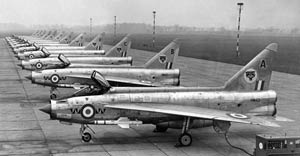- Yes
- No
The Lockheed Lightning Mk. I was a heavily neutered P-38E variant originally ordered by the Anglo-French Purchasing Committee in March of 1940. Due to the Insistence that the Allision engines were to have commonality with the ones already ordered with the P-40 Tomahawks, the Lightning Mk. I’s were to be fitted with non-counterrotating engines and no turbo-superchargers. After a poor reception of a RAF test pilot, all but 3 aircraft were cancelled and following further testing returned to the USAAF.
History
After the beginning of the war, France and Britain ordered a multitude of American aircraft through the Anglo-French Purchasing Committee based in New York. One of these aircraft was a variation of the P-38E and a total of 667 planes were ordered, in total worth 100’000’000$. The French model designated Model 322F and
the British one Model 322B. As they had also ordered other Allison-powered aircraft from the US such as the P-40, the Committee asked that the aircraft be fitted with 2 Allison V-1710-C15 (military designation V-1710-33) right-handed engines without turbo-superchargers. This resulted in quite a bit less performance than the standard P-38E.
After the fall of France, the entire order was taken over by the British and they added the service name “Lightning”, but after some major battles like the Battle of Britain they modified the contract such that the first 143 aircraft were to be delivered as ordered while the remaining 524 would be the standard P-38E, designated Lightning Mk. II. Later in 1941, when a rather negative assessment regarding the tail flutter problems of the P-38 was received, all but 3 of the 143 Lightning Mk. I’s were cancelled. Because Lockheed didn’t want to accept a loss of 15’000’000$, they decided to hold the British accountable for all 143 aircraft and following that, negotiations stalled.
After the attack on Pearl Harbor, the US seized about 40 aircraft and received delivery of all other Lightning Mk. I’s of which the 3 non-cancelled examples were sent to Britain in March 1942 for evaluation. Test flights didn’t start until May at Cunliffe-Owen Aircraft, the Aeroplane and Armament Experimental Establishment and
the Royal Aircraft Establishment. The aircraft tested by A&AEE was unarmed and was not allowed to exceed 300mph (480km/h) but received positive reactions for its landing gear and its one-engine handling.
One aircraft was returned to the USAAF in December 1942 and the other 2 in July 1943. Of the 140 Lightning Mk. I’s that remained in America, 19 were unchanged and redesignated RP-322-I, where the “R” stands for “Restricted” due to the engines and the higher risks on takeoff while the other 121 were modified with counter-rotating, non-turbosupercharged Allison V-1710F-2’s and redesignated P-322-II. These were used as advanced trainers and test platforms.
Specifications
Crew: 1
Length: 11.53m
Wingspan: 15.84m
Height: 3.9m
Wing Area: 30.42m²
Powerplant: 2x Allison V-1710-33 inline engines with 1’040hp at takeoff
Maximum Speed: 644km/h
Climbrate: ~13.5m/s
Offensive Armament: 1x 20mm AN/M2 cannon (150 rpg) and 4x 12,7mm M2 Browning Machinegun (500 rpg)
Pictures




